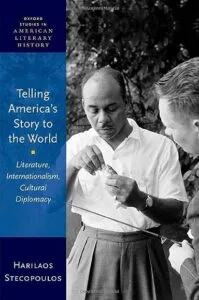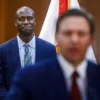Few contemporary writers enjoyed the literary diplomatic status accorded Ralph Ellison during the 1950s. From an appointment at the Salzburg Seminar in American Studies (1954) to USIA-sponsored lectures in Karachi (1957) and work as the chief American delegate at the 1959 PEN International Congress, Ellison assumed a variety of high-profile diplomatic roles, whether state sponsored or ostensibly nongovernmental. These ambassadorial offices appear to have pleased Ellison, not least because of the gratis travel they afforded him. But he found distasteful the idea of representing a particular identity or politics, particularly where matters of race were concerned. In 1955, the novelist declined the State Department’s request that he travel to Ghana to write a novel about the African nation’s independence. One year later, he would turn down the State Department’s invitation to attend the Présence Africaine gathering in Paris, preferring to participate in the CCF’s seemingly more elite Mexico City conference. This pattern would continue throughout the 1950s and 1960s, as Ellison repeatedly declined any cultural diplomatic mission that framed him as an African American, whether it meant lecturing in tandem with a jazz tour (1959) or participating in the groundbreaking “Conference of African Writers of English Expression” at Makerere University College in Kampala, Uganda (1962). When it came to the cultural cold war, Ellison tended to refuse any assignment that would exploit his Blackness, preferring to travel abroad as a literary figure, not an African American ambassador addressing the nation’s problem of the color line.
As Ellison would teach his European pupils in Salzburg, the existence of many diverse communities rendered his native land richly heterogeneous—a veritable “international country”—and also testified to an ongoing and still challenging attempt at reconciling color and democracy. The best of American literature, and its novels in particular, contributed to the ongoing effort to forge “unity in diversity,” and this national dilemma manifested important ties to the crises “faced…by peoples throughout the world.” “Through forging forms of the novel worthy of [American diversity],” argued Ellison in his 1953 National Book Award acceptance speech, “we anticipate the resolution of those world problems of humanity which for the moment seem…completely insoluble.” The literary instantiation of American pluralism would help teach Europeans and all the world’s peoples how to create a better future, a valuable lesson for the Salzburg students who had historically received little if any exposure to literatures of color.
Ellison found distasteful the idea of representing a particular identity or politics, particularly where matters of race were concerned.
Ellison’s Salzburg syllabuses and his extant lectures speak to his urge to showcase the multiracial pluralism of American literature. As was the case with most Salzburg instructors, Ellison taught two classes at the seminar: a large lecture class open to the public and a seminar restricted to enrolled students. The novelist devoted the lecture course to the seemingly innocuous topic of “The Role of the Novel in Creating the American Experience,” while focusing the smaller class on the seemingly more controversial issue, “The Background of American Negro Expression in Folklore, Writing, and Music.” Indeed, Ellison was the first African American instructor to offer a Black studies course at the seminar. Not surprisingly, the two classes overlapped, and the writer’s terse descriptions make those connections visible. Here is Ellison’s list of lectures for the open course:
“The Role of the Novel in Creating the American Experience.” Factors influencing the form of our 19th and 20th century fiction, stressing the works of Melville, Twain, Hemingway, Faulkner. Rhetorical Problems of the American Novel, as a Medium of Communication, as a Definition of Experience, as a Gauge of Democratic Health, as a Projector of the American Image, as The Search for Identity, as a Reflection of the Racial Situation and the Problem of Value.”
And here are his topics for the seminar:
“The Background of American Negro Expression in Folklore, Writing, and Music.” The Slave’s Vision of American Reality; Early 20th Century Negro Writing as a Search for Identity; the 1940s: Negro Fiction and the Crisis of Negro Sensibility; Recent Novels: Fiction and the New Face of Freedom. Music: The Blues, Jazz, Spirituals.
Taken in tandem, the two Salzburg courses offer a revisionist account of American literature that diverged from predictably conservative 1950s scholarship. If the Salzburg Seminar in American Studies had from its inception emphasized the value of a uniformly white American canon that stressed the American Renaissance and high modernism, Ellison offered courses implying that one could find in Black American writing important, long-overlooked representations of democracy and community. Both classes spoke to the cultural and political imperatives underwriting the Salzburg Seminar. The overview of the American novel course comments self-consciously on the very question that had preoccupied Ellison in his correspondence with Salzburg Seminar director Dexter Perkins: that of American culture’s relationship to a state public relations project. Ellison aimed to teach the American novel as a communicative, distinctly social form—a “Medium,” “a Gauge,” and “a Reflection”—thus creating a class well suited to the cultural diplomatic mission. And by including a focus on “the Novel…as a Projector of the American Image” among his lecture topics, Ellison makes still more explicit his interest in understanding literature’s place in contemporary US propaganda.
The seminar’s focus on “American Negro Expression” indicates a desire to ponder literature’s role in the projection of “the American Image” and a tentative willingness to use African American literature to support cold war ends, particularly those pertaining to the world’s perception of American race relations. Consider how Ellison’s overview of the seminar presents an uplifting historical narrative of African American politics, history, and literature. The seminar description begins with the topic of “The Slave’s Vision of American Reality,” moves through a focus on “Early 20th Century Negro Writing as a Search for Identity,” and concludes with an analysis of “Recent Novels: Fiction and the New Face of Freedom”—an implicitly teleological narrative that indicates how the contemporary moment corresponds to a new epoch of African American emancipation. Whatever the crimes of the past, the United States projected in Ellison’s course materials is a place where African Americans have found their way to the heights of artistic expression (the novel) and civil rights (e.g., Brown v. Board of Education), what Robert Stepto dubbed the linked goals of freedom and literacy. And this narrative testifies to the exceptionalism of the nation itself. Much as the line from slavery to freedom reaches its apotheosis in contemporary African American literature, so too does the move from American moral blindness to clarity culminate in African American writers’ capacity to explain and communicate the meaning of American democracy. For Ellison, that is, the tradition of self-criticism that anthropologist Margaret Mead, an earlier Salzburg professor, celebrated as central to American literature succeeds largely because of African American writing, implying that postwar African American literary texts best exemplify those national characteristics that will resonate with the world at large.
In some of his Salzburg lectures Ellison made his willingness to affirm American democracy even more explicit. At one point in the manuscript of the September 15, 1954, presentation, for example, Ellison first explains how white Americans often defang their racialist texts, rendering “Huckleberry Finn…a boys story, Uncle Tom’s Cabin…the Tom Show,” and Go Down, Moses “a hunting story;” but then he takes a different tack and explains that his very presence in Austria implies that things have begun to change. “Fortunately this is being faced up to today,” Ellison informs his students. “I suppose that is why I’m here before you.” A telling ad lib follows, in which Ellison references the 1954 Brown decision: “This is what we’re learning to do in the States today and this of course is what we’re trying to do in the world. All nations must or we, like the Compson family in The Sound and the Fury will go under.” Using the intensely racialist context of Faulkner’s Yoknapatawpha county as a frame, Ellison indicates through this seemingly offhand comment that all Americans—the “we” proves inclusive here—are learning to address diversity and hope to have other nations join them in this endeavor. As the paramount example of an evolving democracy, the United States rejects complacency as leading to a Compson-like nadir and instead models for the world an arduous process of self-critique, one best articulated by an accomplished African American writer like Ellison himself.
The complexity of the US experience doesn’t inform a triumphalist narrative of a progressive nation that will lead the world to pluralist union.
In tension with their endorsement of American pluralism, his classes also encouraged a critical examination of the United States and its claim to lead the free world into a democratic future. The text selection and course content of his African American studies class could hardly signify otherwise. To communicate American literary culture to Europeans was to demonstrate that this culture wasn’t limited to the works of such white male authors as Melville, Twain, Hemingway, Faulkner, and Bellow—all represented in the lecture syllabus. American culture also included the important contributions of artists of color. The seminar on “Negro Expression” featured such texts as Chester Himes’s If He Hollers Let Him Go (1945) and The Third Generation (1954), as well as James Baldwin’s Go Tell It on the Mountain (1953): novels unheard of at the seminar prior to that point. There was little chance that either Alain Locke or John Hope Franklin, Ellison’s only two African American predecessors, discussed any of these texts. Ellison’s decision to make his seminar depend on a discussion-oriented pedagogy demonstrates all the more his desire to have the European students engage on a personal level with African American literature.
We may speculate that this approach hardly sat well with certain portions of the US government. The US Army counterintelligence agents who labeled Salzburg founder Clemens Heller and Salzburg professor F.O. Matthiessen subversives in 1948, or the McCarthy emissaries who purged literary texts from USIA libraries in 1953, would likely have found fault with a Salzburg class reading list that included writers like Himes and Baldwin. After all, in drawing attention to white supremacist violence, If He Hollers Let Him Go and Go Tell It on the Mountain don’t so much engage in mild American self-criticism as indict the nation’s structural racism. American democracy hardly proves appealing, let alone democratic, in those novels. Ellison may have given officials added reason for concern with some of his comments on the American psychology of race. In one noteworthy presentation on September 3, 1954, for example, the novelist shifted from an analysis of Melville’s Benito Cereno to a broader account of American racial politics, arguing that “the so-called race issue became like a stave driven into the American system of values. A stave so deeply embedded in our ethos as to render America a nation of ethical schizophrenics.” In this bleak account of the national culture, the complexity of the US experience doesn’t inform a triumphalist narrative of a progressive nation that will lead the world to pluralist union. Instead, the United States takes the form of a mentally ill patient who cannot figure out his or her political identity, let alone help other communities figure out theirs. If Ellison’s Salzburg teaching sometimes seemed to promise a Cold War propaganda dividend for the United States, his account of American psychological instability illustrates an equal capacity to undercut the state’s public relations campaign.
__________________________________
Excerpted from Telling America’s Story to the World: Literature, Internationalism, Cultural Diplomacy by Harilaos Stecopoulos. Copyright © 2022. Available from Oxford University Press.



